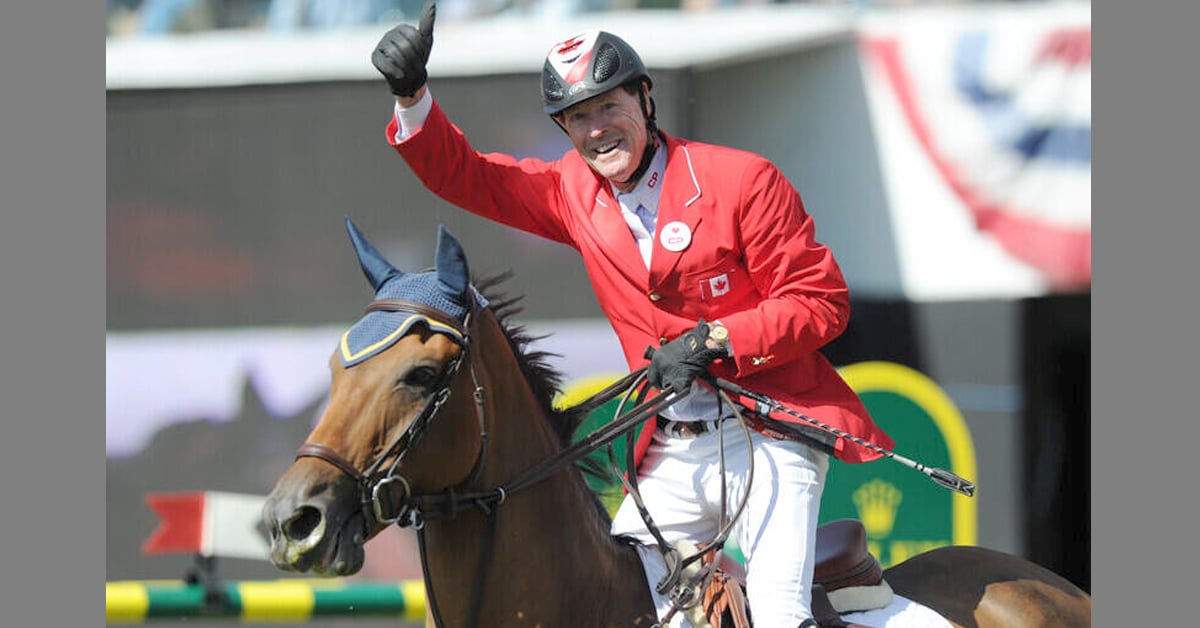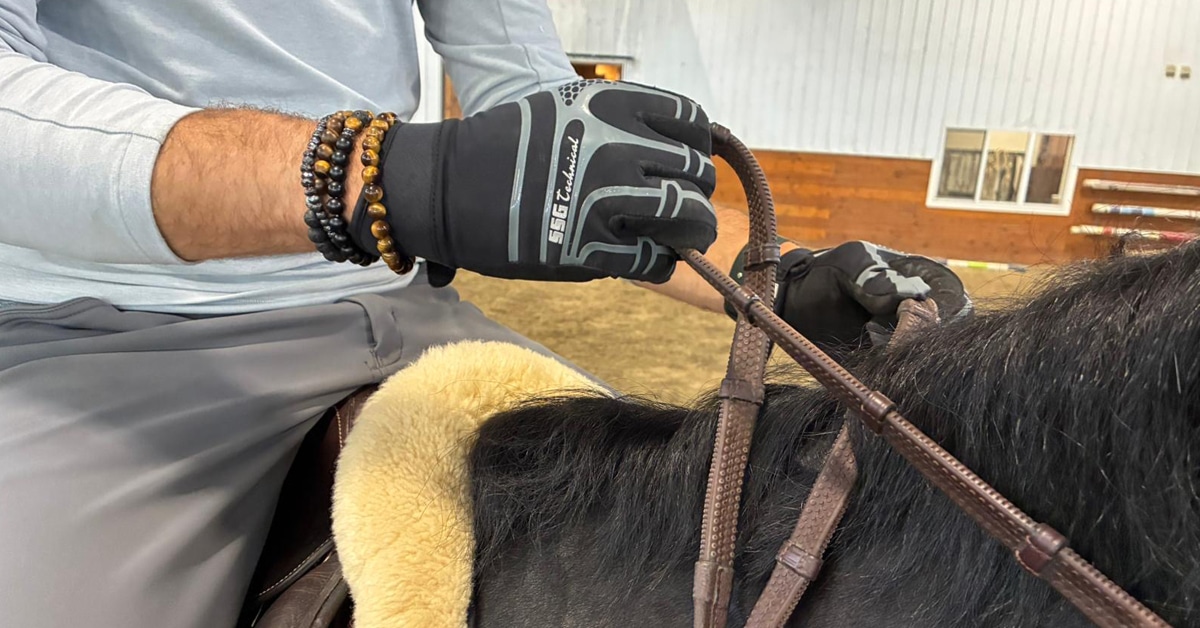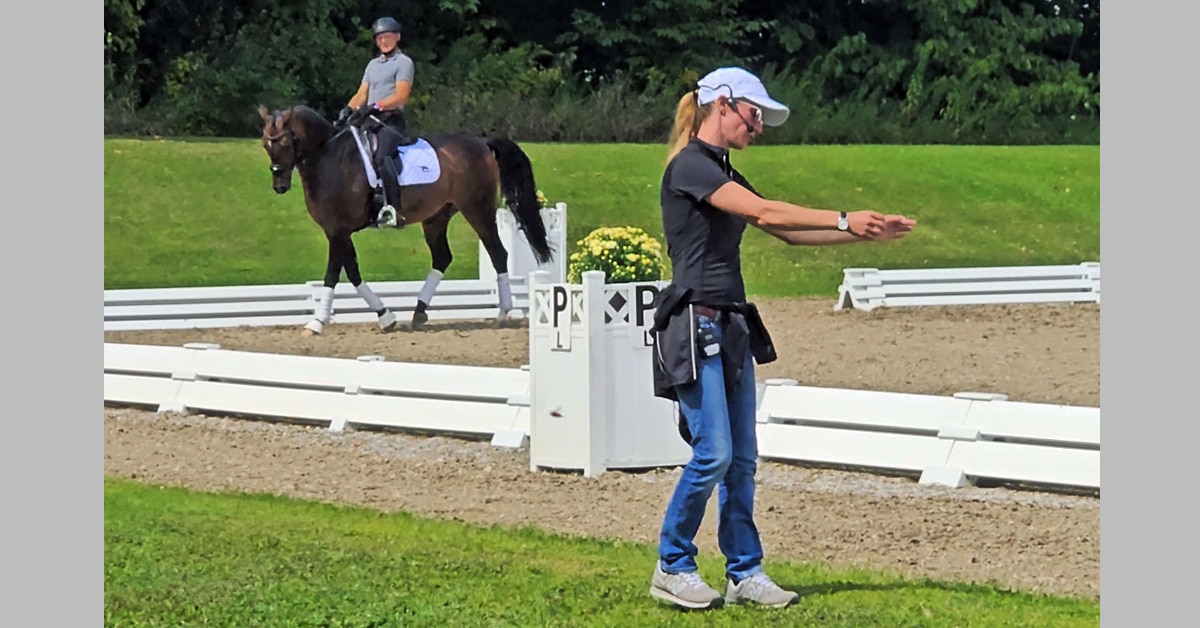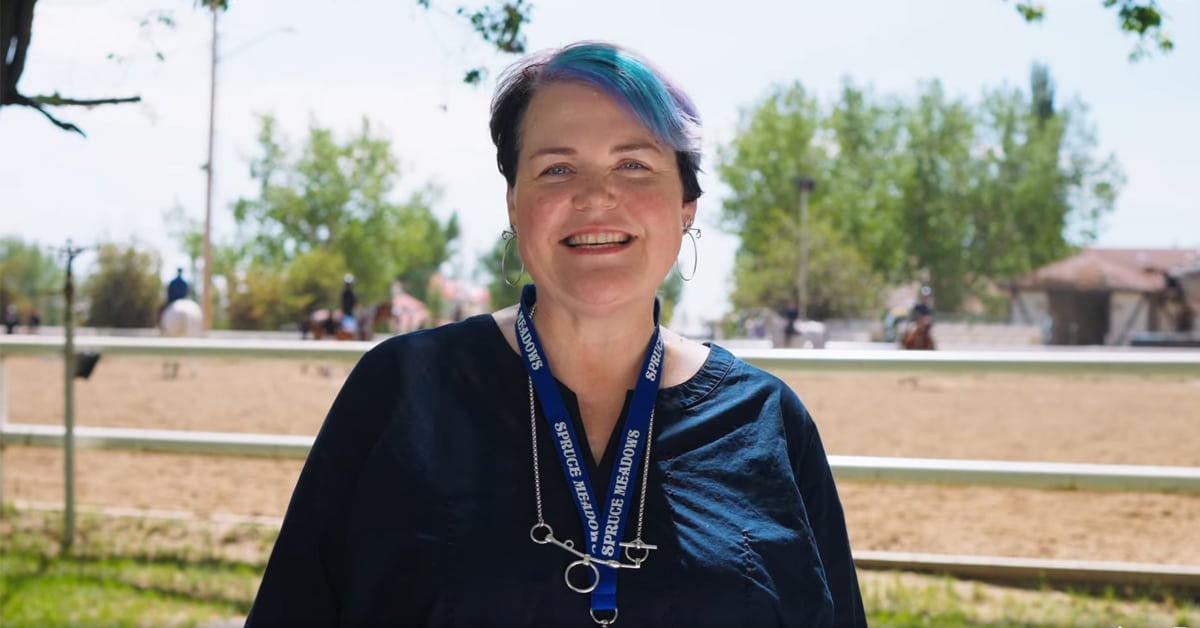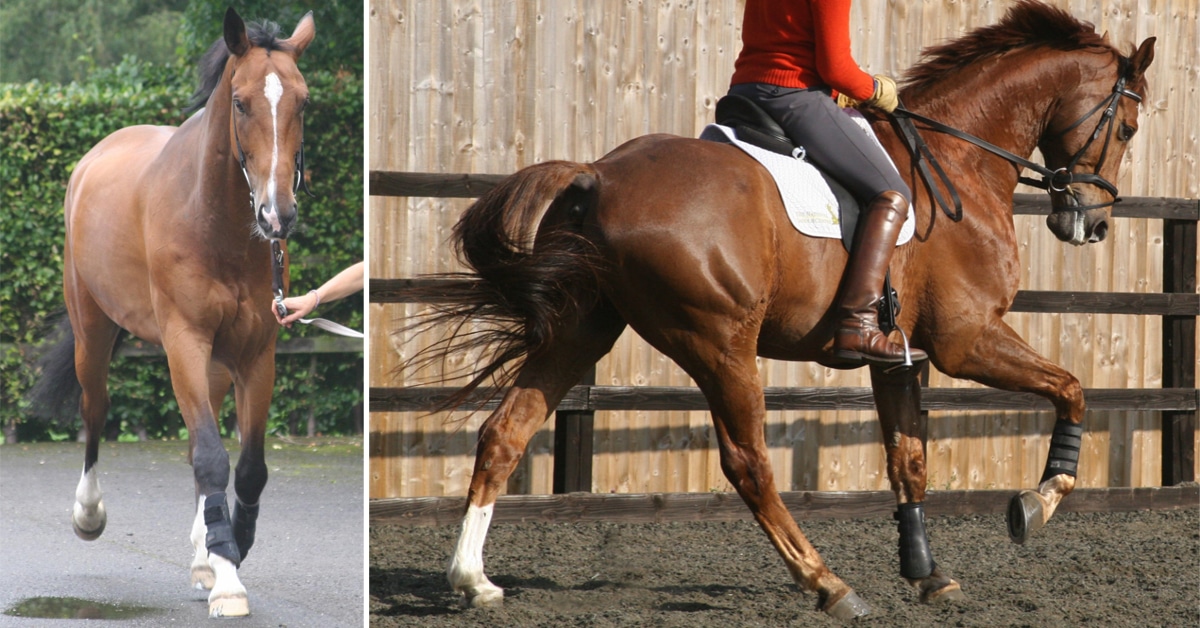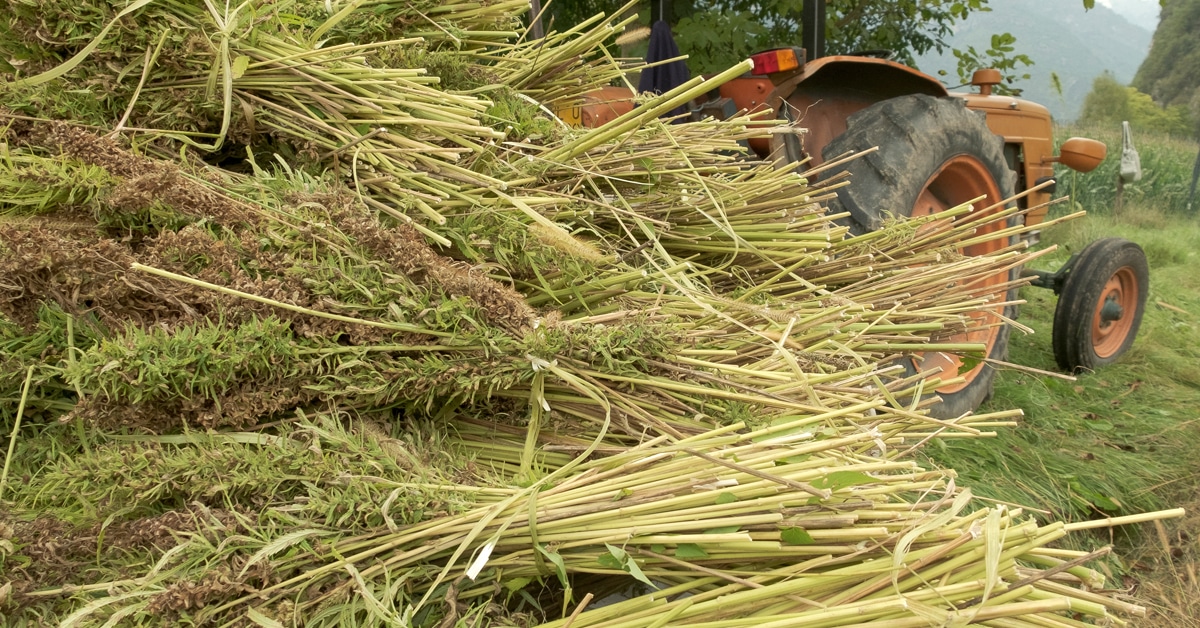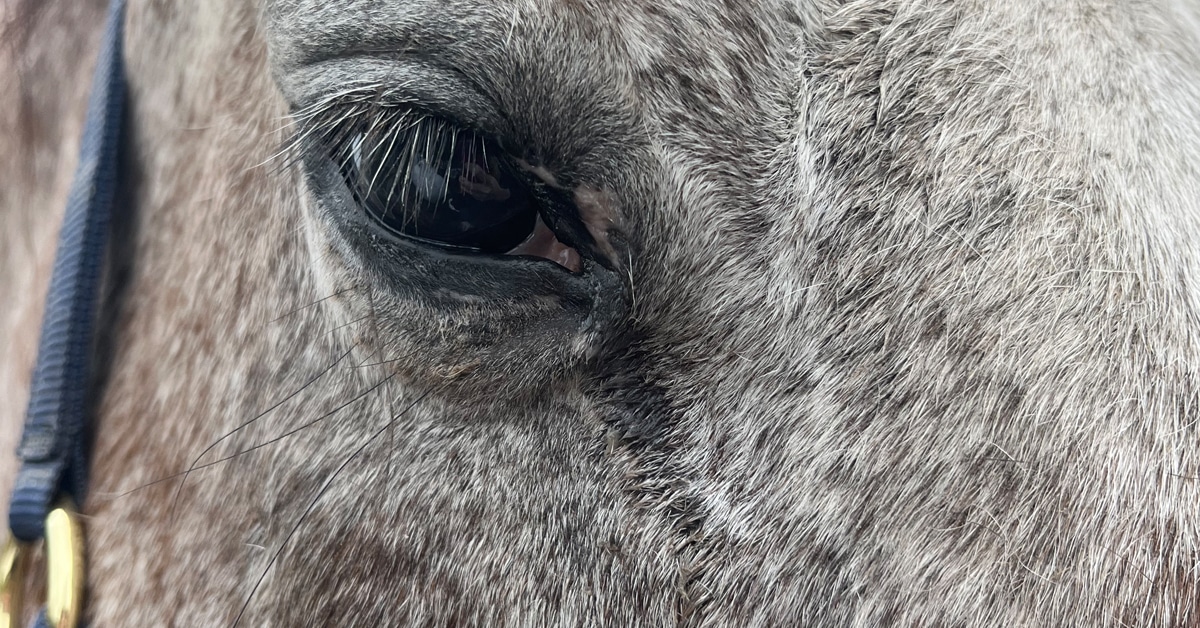Lorraine MacDonald, Equestrian Canada senior dressage judge and retired FEI 4* dressage judge, was formerly an FEI grand prix competitor herself. Through the FEI Challenge Tours, Lorraine has judged and given clinics in South America, Asia, India, and Africa, and was involved in Canadian team boot camps in preparation for Pan Am Games and the London Olympics. In her own words, Lorraine is always looking to award the elusive “10.”
“People give away so many marks when showing,” says Lorraine, based on what she sees from the judge’s seat. “Judges expect every dressage horse, from beginner to Olympian, to be ridden at an even, ground-gaining, unconstrained walk; to have a supple, regular, active trot with elasticity and impulsion coming from behind; and a united, cadenced, three-beat canter.”
Having said that, Lorraine remarked that she’d often rather be coaching riders than judging, and gives us an inspired sense of what we could accomplish ourselves through practice.
Before the Test
Lorraine reminded us that show riding is about perception. “It is a moment in time to present yourself to be judged. Make sure that you and your horse look good – proper-fitting tack and clothes, hair in place, neat and professional. Attending a test riding clinic is a great place to practice, learn the test, and feel some pressure. Try to practice perfect schooling each ride.” She also suggested practicing by drawing the movement on paper at your desk without your horse.
“In order to have ample time for your horse to get comfortable with the competition area, enter the area just as the preceding rider halts and salutes. Show off your best gait and do transitions to make sure your horse is attentive and ready to impress.
“Don’t change things when you come into the ring – don’t lose your mind, don’t fuss. Just ride like you do in the warm-up!” advised Lorraine. “Make corrections. For example, adjust your reins and do half-halts. Fix problems and carry on. If you need to rebalance, do so, and set up for the next movement.”
Entering the Ring
“As you enter the ring, focus on straightness. Establish a three-second halt before saluting – take your time! Make eye contact with the judge during the salute. It should be a military salute with the back of your hand to the judge, fingers closed and arm and hand straight down. You can salute with either hand, but make sure there is no whip in that hand. Stay on centreline and make a fluid 10-metre turn at C.”
Training Level
Lorraine quoted Christilot Hansen-Boylen while noting that as we bring horses through the training scale, we must develop the pushing power of the horse. “Christilot reminds us of the importance of the Training Scale: rhythm, suppleness, contact, straightness, impulsion, collection. At training level, we develop the rhythm, suppleness and the pushing power. The contact can be quite natural to show acceptance of light contact. Too often we see too much contact and not enough engagement and balance.” Lorraine noted:
The halt you teach at training level is what you’ll use throughout all the levels.
Corners are your friend. Training level corners are not as deep as grand prix corners, but the difference between a circle and a corner is that a corner is two feet deeper than a circle. Almost every movement begins in a corner. Use the corner to set your horse up.
Circles should show balance, bend, suppleness, control, accuracy, and good training. Step off the track at C, do not go along the wall and stay out of the corners. Control the bend. Ride the four points of the circle.
Use of inside rein: Lorraine noted that people ride with too much inside rein. Younger horses should be ridden straighter with a slight bend. Whether going straight on on a circle, always ride on two tracks. Turn with the outside rein versus pulling on the inside rein, which inhibits engagement and unbalances the horse to the forehand.
The Walk has four categories (this is outside of training level, but begins here). The mark for paces at the end of the test will be affected by how correctly the walk is performed. It should not be slow and stiff, but four-beat. The rider should give to the horse and keep the horse relaxed and honest. Lorraine reminded us that even at grand prix the two walks have coefficients for marks. As a rider, you need to know what walk you are doing and what score you would give yourself. Don’t take a break when you walk your horse! Strive to achieve an active, energetic walk with invisible aids and elegance.
The four walk categories are:
Collected: It’s better to teach collected trot and canter before collected walk (work on this last).
Medium: You don’t see many correct medium walks at shows. It should be active, stepping into the forefeet, nose in front of the vertical – not as extended as extended walk; not as collected as collected walk.
Free: relaxation, clear downward stretch, loose reins, active and energetic with good engagement and shoulder freedom. Ride accurately and show supple transitions where indicated – ride to the letters!
Extended: there should be more contact than what is often seen at shows. The nose should be in front of the vertical and there should be overstep. The horse should move like a panther, moving with its entire body.
Serpentines should be ridden with no corners, no diagonal lines, with loops that are of equal size, and with a change of bend over centreline.
First Level
“Transitions and straightness should be the focus at this level. The higher you go through the levels, the greater the focus on the accuracy of the transitions. For the canter, think bigger and uphill, not faster. When schooling, try 10-meter circles after a lengthening to better balance and engage from behind.
“Show clear downward transitions. Plan earlier – don’t wait for the letter. However, horses are often sharper in a show environment and may need less aiding. More accuracy is needed for the two 10-metre circles. Come to the center line and rebalance. Make the simple change over X. Judges look for a rounder frame and steadier contact at first level.”
Second Level
To answer the question, “What is enough collection?” Lorraine said that when the horse can do the movements, then it is enough. She reminded us to collect from behind and not try to crunch the horse’s nose into its chest. The classic look is this:
- a soft hand
- a horse with self-carriage
- the poll is the highest part of the head
- • the horse’s nose is in front of the vertical
To achieve the correct contact, Lorraine said there are a number of things to avoid, such as front-to-back riding which results in a short, low neck and legs out behind – a very incorrect, unbalanced picture that will earn a low score.
“Don’t forget to ride half-halts to prepare and balance the horse during the test. Judges appreciate thinking riders who correct problems – just like you would in the warm up.”
The half turns on the haunches are a prelude to pirouette. “Make sure when executing these to come back to where you started. The horse should keep the rhythm and activity and think forward during the movement.” Lorraine noted that she likes to see a half-turn on the haunches that is big. A turn on the haunches is one meter larger than a walk pirouette.
Travers should be trained before shoulder-in to control the hind leg and the lateral bend. It’s very important movement that builds balance and suppleness. (Note that half-pass is a travers on a straight line.)
Third Level
“The horse has to be physically stronger at this level, and there needs to be appropriate connection between horse and rider, and balance, suppleness and self-carriage. All of this goes into the flying change, which is an expression of the quality of the canter and the collection.
“For the other movements, show clear distinction between the paces. For example, between medium and extended trot there should be more impulsion and more overstep.
“Riders at this level often lose marks because they have an uncentered position – falling to the outside and against the flow and bend. For the half-pass or shoulder-in, your weight is slightly on the inside seat bone. The concept here is that the horse comes under your weight.”
Fourth Level
“How do I know when my horse is ready to move up?” is a common question riders ask. Lorraine advised that the horse should still be a happy athlete and training at a higher level than you will compete at. “Keep your horse sound, working off the hind end. Don’t allow a gaping mouth on the horse and don’t have the horse’s neck cranked in.” She noted that there will be peaks and valleys – like the stock market going up and crashing, as fourth level is the introduction to Prix St. Georges and more difficult movements. As riders, we need to ride the peaks and valleys.
Schooling Working Canter Half-Pirouettes: Begin by riding a 20-meter square and ride the four corners of the square as a quarter-pirouette with flexion and clear control of the bend and activity. Remember this is a forward movement. When you can do this easily, then try more pirouette steps leading up to the half-pirouette.
Read Improving Your Test Scores: The Upper Levels here.
The Latest
